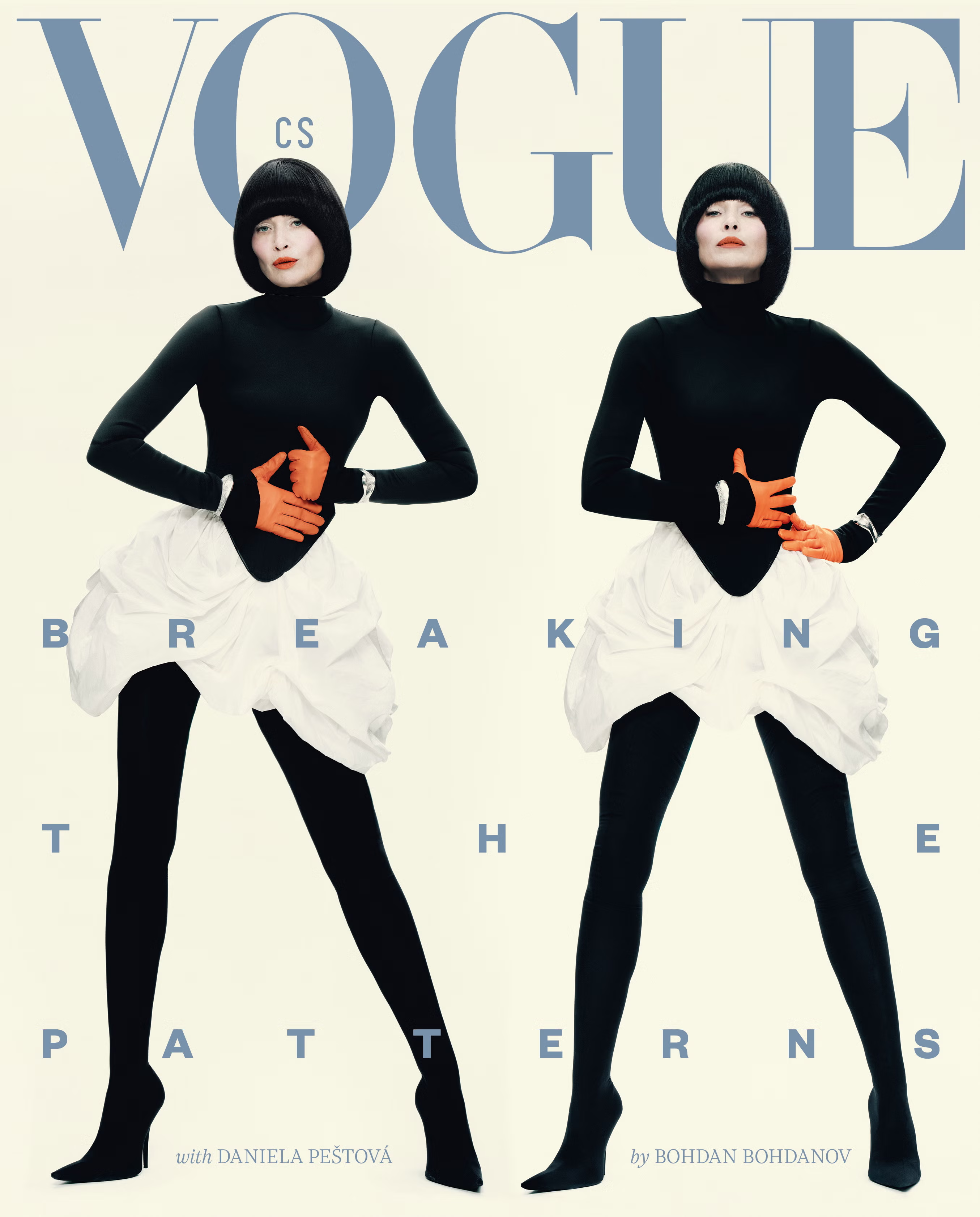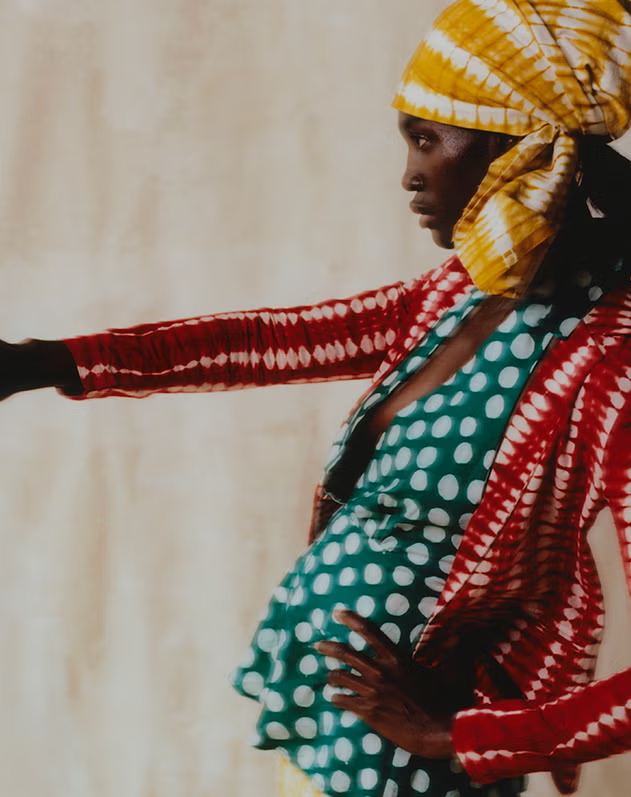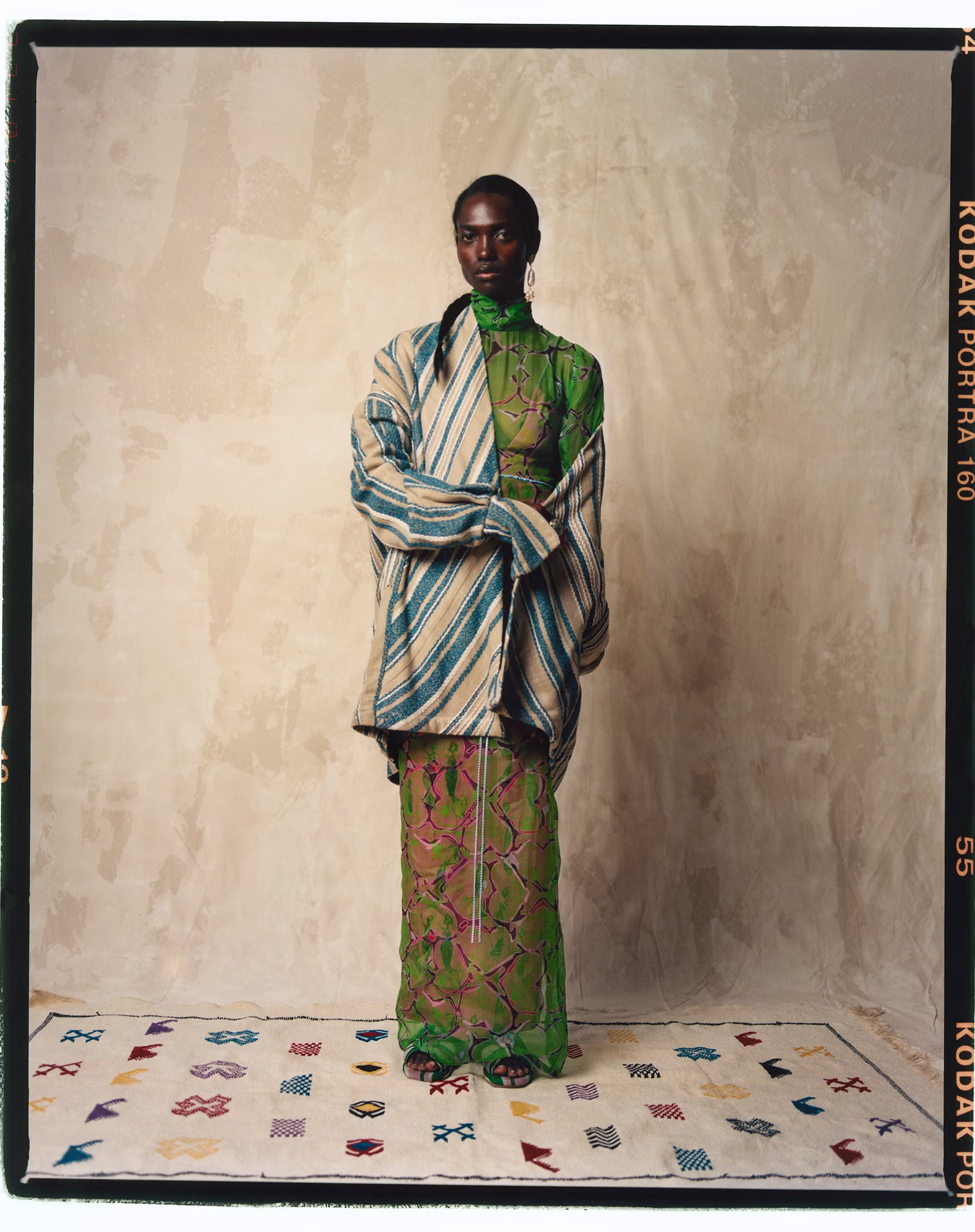Vogue CS in English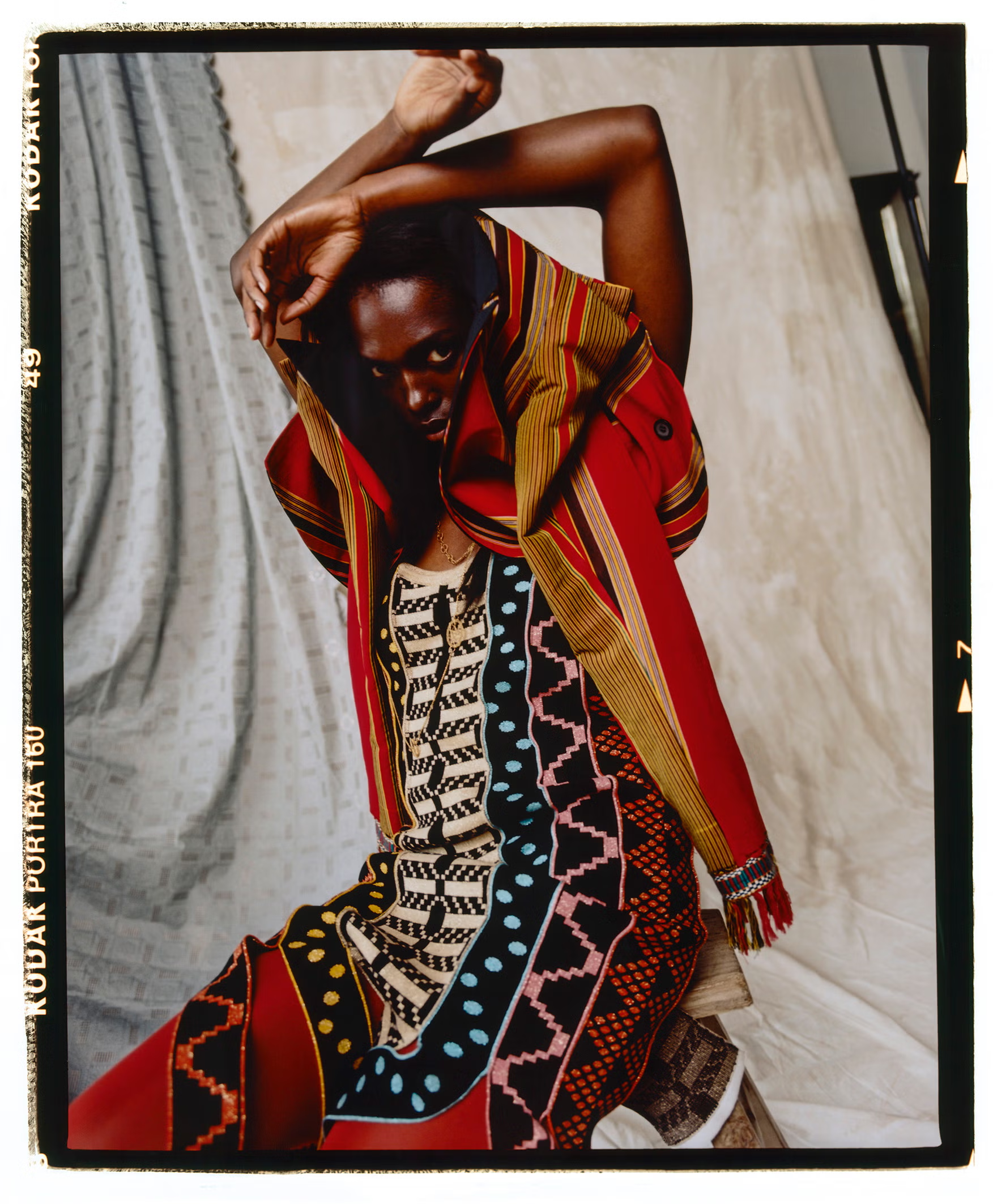
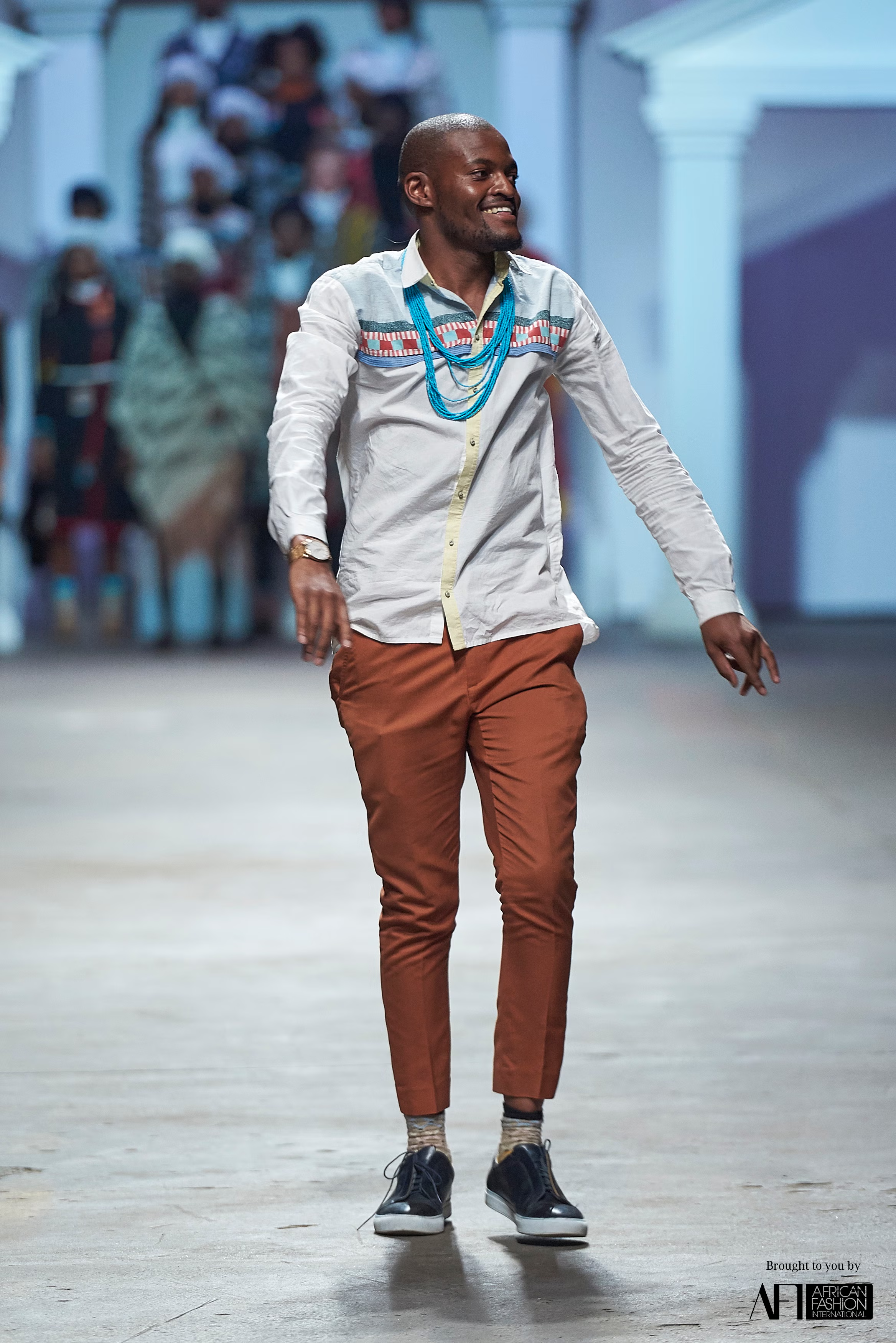
Interview with Laduma Ngxokolo of MAXHOSA
Ooooota Adepo1. 8. 2020

Foto: Rhys Frampton
Blazer, Gloria Wavamunno; dress, Maxhosa (sold at Koibird); tights, Wolford; boots, Stella McCartney; necklaces, Vintage.
Ooooota: Describe your earliest childhood memories of seeing the traditional attire of the Xhosa people. Were you aware of the imprint it would leave on your consciousness and the influence it may or may not have had on your decision to create MAXHOSA?
Laduma: My earliest childhood memory was pre-teen. It was part of daily life and whenever there was a traditional gathering, it was engrained into the mind the items the elders would wear. You were quick to notice which beads they wore as well as the attire that separated the elder men from the young men, and older mothers from young women.
This left a great mark and influence on me, and I was aware of it. It definitely influenced my design. Part of the decision to name the brand MAXHOSA was the fact that I also had undergone the traditional initiation ritual, which also informed which clothes would be worn.

Maxhosa
Ooooota: Traditional attire worn by Africans across the continent celebrates heritage and affirms pride in culture. Why is it important for you to incorporate cultural motifs as you do with MAXHOSA into today’s modern-day dressing? What does it mean for young people in particular?
Laduma: There is a new revolution happening, where many individuals are starting to trace back their roots. This has shifted into creative output where traditions and culture are now taking centre-stage in the design process. I do see part of what I do as an anthropology exercise, as a way of placing culture in the modern context. It is so impressive to find the youth reclaiming back their language and cultures, by also using us as a case study of success. There is a saying that goes like this, when everything fades and disappears, culture will always remain. We truly believe that, and the best way to honour that is to try and evolve culture.
Ooooota: Talk to us about Amakrwala and the significance of community held values. Is this of personal significance to you? Is the initiation ritual commonplace today and if so, do you think it should be preserved?
Laduma: The ritual is about instilling a core set of values in young boys as they transition into manhood, while supported by their communities. This set of values is instilled in them, so they come back to society as new men able to go forth and expand their families’ legacies. It is a very crucial part of the Xhosa culture, its relevance remains today. It does need to be preserved, and our very first collection was our way of ensuring an aspect of its preservation.
Ooooota: Tell us about the patterns and beadwork in your design. Do they tell a story? Do you have a favourite or favourites?
Laduma: Beadworks are a very important source of knowledge about the African continent. Beads, particularly glass beads, were imported and became a part of colonialism. Prior to that, clay beads were used. It tells a great story of how our cultures have been transformed. Beads within the continent of Africa carry narrative with each culture having its own specific colourways and beadwork patterns. When you look closer into the Xhosa beadworks, the core design inspiration, you see that there are many bold colours. Each colourway and pattern represent a certain clan and a time within the last century.
MAXHOSA used ten core colours in the design process, some of these from beadworks. There are a few favourites such as Isicangca, a neckpiece that is very majestic when worn.
Ooooota: Your designs have been praised in South Africa, Europe, and the US. Is it important for you to also connect with other African consumers in Africa?
Laduma: It is very important, as our principle is to ensure that we have a footprint within the continent first before we are head towards a more global audience. We are happy to know that the majority of our market by a huge margin is in South Africa as it means that the brand resonates with many people on the continent. We are aware that our designs are recognized by a global audience. As a global brand, we are very specific about ensuring people know that we are created by an African designer. It is important information that should not be overlooked.
Ooooota: What is your perspective on cultural appropriation in design? Are ideas up for grabs by anyone from the public pool of inspiration, or should certain creative expressions related to tribe and heritage remain exclusively in the creative jurisdiction of people from that tribe and of that culture?
Laduma: That is a very difficult question as on one hand, design is an artform that lends itself to a borrowed form of expression. Ideas and creative expressions evolve but there is a way of always bringing it back to the source. On the other hand, it is important to know that there is a right and wrong way to go about it. One should not blatantly take from a culture they are not directly contributing to, as it nullifies the work and years of fight that the culture has had to have to maintain the cultural practice. There must be a way the people of that culture feel empowered by this form of expression. We are also inspired by many cultures across the globe and we try our best not to create an injustice within that culture.
Ooooota: What challenges have you faced in operating a fashion brand from South Africa? Where would you specifically like to see improvement and how can capital markets, investors and consumers help with this?
Laduma: The main challenge is production, so we have ventured into owning our own production facility. When outsourcing production, delivery to client and quality assurance are often issues we tackle. I would also like to see improvement in the business of fashion - we need to show young designers that they are crucial in the development of their own businesses.
Ooooota: According to your website, your collections show luxury houses can also have streetwear and leisurewear. If luxury in the past was defined by access to spaces, wealth, and privilege, how does access through streetwear and leisurewear rearrange our understanding of luxury?
Laduma: Luxury is comfort and elegance. We do need to shift our minds to African luxury where core values of humanity still prevail. Luxury is an aspiration for many, and with adequate resources and access, it can be afforded. We need to allow the conversation around more access to luxury. With the core streetwear and leisurewear, luxury apparel can now be seen as a lifestyle product that is not restricted to a certain occasion.
Ooooota: Your last collection Izilimela is an homage to your previous collections, and Xhosa tradition. Are there any other tribes in South Africa that inspire you? Are there tribes and cultures in the world you also find interesting?
Laduma: We are inspired by many tribes and cultures within the continent. We find many cultures to be interesting and are a source of inspiration. We also have rebranded our company to MAXHOSA AFRICA as we are inspired by the continent of Africa, its vast cultures and colours.
